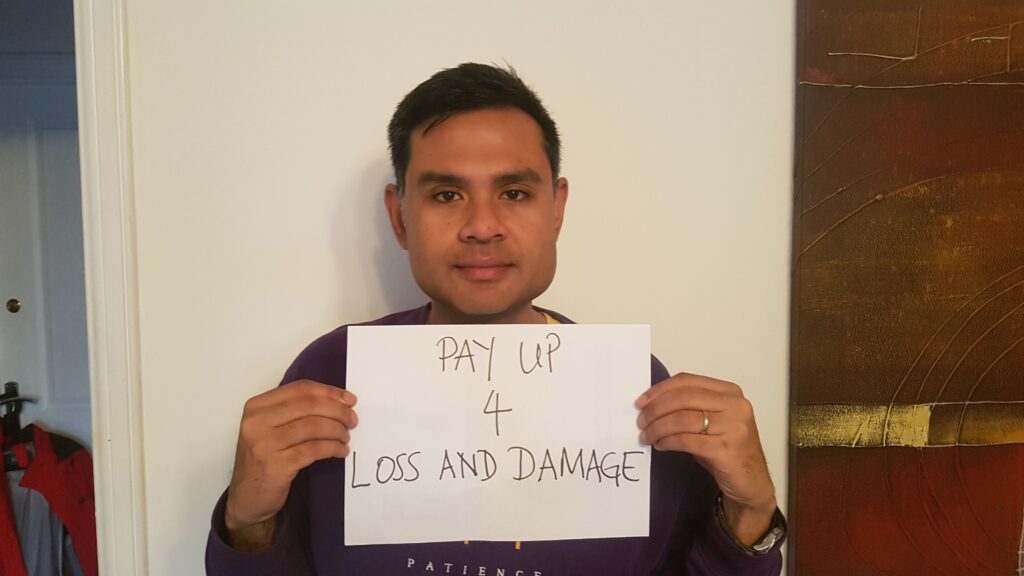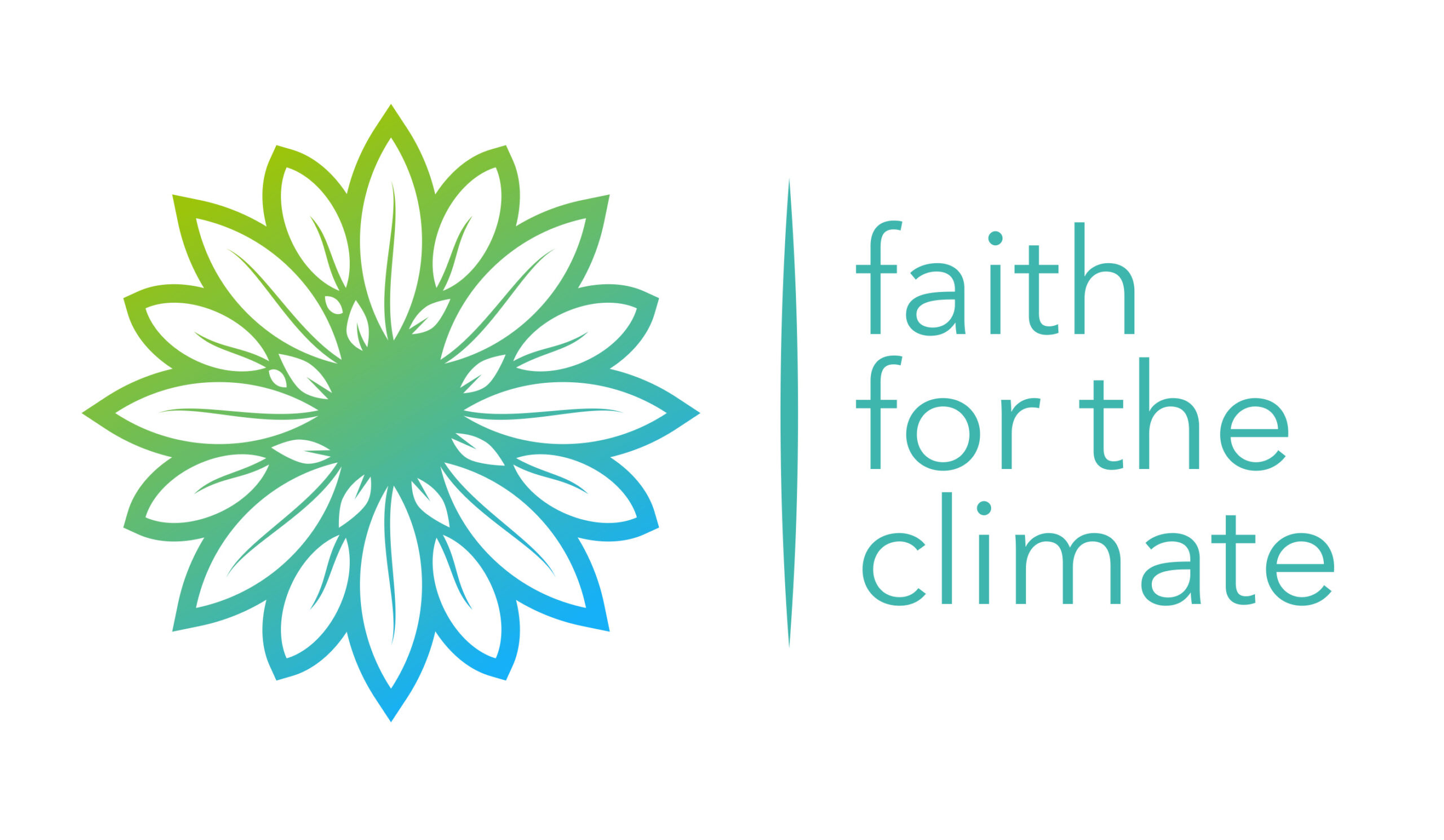Growing within ourselves and with each other

We continue our series of personal reflections from core members of the Faith for the Climate team on their experiences at COP26 as part of our year-end roundup. This final instalment is from our director, Shanon Shah. Shanon works for us part-time, and spends the rest of his working week teaching at the University of London’s Divinity programme, conducting research for the Information Network Focus on Religious Movements (Inform), and writing for Critical Muslim, the flagship publication of the London-based Muslim Institute. Before relocating to London, Shanon worked or volunteered at numerous organisations in his native Malaysia, including the Malaysian AIDS Council, the Centre for Independent Journalism, The Nut Graph, Sisters in Islam, and Amnesty International, and was a multiple award-winning musician and playwright.
When I first became Coordinator of Faith for the Climate in March 2020, I had no idea what “loss and damage” was. At least now I can start by outlining that it is one of the three pillars of action on climate change agreed upon by the United Nations via the Paris Agreement. It refers to the destruction from climate breakdown – of lives, livelihoods, nature, and cultural and spiritual heritage – that cannot be avoided despite the Agreement’s two other necessary pillars of action. The first pillar, mitigation, refers to what is needed to curb the carbon emissions that cause global heating – most urgently, ending deforestation and fossil fuel extraction and production. The second, adaptation, is about how humanity must cope with climate change by changing the ways we use our buildings, land, transport, and so on.
Even after learning this in my first year on the job, I would have struggled to identify a one-stop resource that explained this to people of faith in the UK and outlined the steps we could take together. Now, I can point to the Make COP Count website.
This example on loss and damage instantly sprang to mind as I read the inspiring reflections from the Faith for the Climate core team and members who were at the now-concluded 26th Conference of the Parties (COP26) of the UN Framework Convention on Climate Change (UNFCCC) in Glasgow – Canon Giles Goddard, Rosh Lal, Rachel Mander and Kamran Shezad. For me, the issue of loss and damage encapsulates a remarkable story of growth – collectively for the climate justice movement and personally for me – before, during, and after COP26.
Awareness of loss and damage has allowed people of faith to speak more powerfully about the growing impacts of the climate crisis on the people who are least responsible for causing it. It has also emboldened us to shine a spotlight on the denial and foot-dragging by those who are overwhelmingly the most responsible for causing the crisis yet suffer the least.
I did not join Faith for the Climate through a formal career pathway in the environmental or conservation sector. I have cross-cutting skills and experiences in pro-democracy and human rights activism from my native Malaysia which I brought into my academic training as a sociologist of religion upon relocating to London. Then I joined Faith for the Climate in what seems now to have been a different era. My interim communications role started in November 2019, after a year that saw climate action dominate the public agenda thanks to Extinction Rebellion, the student climate strikers, the Climate Coalition and many other groups. In the UK general election of December 2019, climate change historically and explicitly became a core part of the political campaign.
Even so, it remained unclear to what extent the UK’s traditional environmental and conservation movement was ready to address issues such as racism and (neo)colonialism as well as economic and gender justice. Coming from a different sort of scholar-activist background from a different political and cultural context, I questioned my own capacity to contribute effectively to climate action.
Then the coronavirus pandemic happened, followed by the murder of George Floyd and the step-change in the Black Lives Matter movements in the US and UK. All of a sudden, the connections between the seemingly different crises that had upended so many lives around the world became obvious. Covid-19, climate change, poverty and racism were not simply natural or isolated occurrences that required piecemeal fixes. It became increasingly undeniable that inequalities in public health, wealth, and environmental damage were the result of historic and ongoing social injustices, and would require fundamental social and political solutions.

Post-COP26, many colleagues – seasoned activists and leaders who have mobilised at many previous COPs – observed that, while the formal outcomes left much to be desired, the groundswell of civil society and faith-inspired actions in Glasgow was extraordinary. Furthermore, people of faith did not simply chant climate justice messages during COP26. Many of us painstakingly prepared, crafted and disseminated these by working together within and across our religious communities for umpteen weeks and months beforehand.
Post-COP26, many colleagues – seasoned activists and leaders who have mobilised at many previous COPs – observed that, while the formal outcomes left much to be desired, the groundswell of civil society and faith-inspired actions in Glasgow was extraordinary. Furthermore, people of faith did not simply chant climate justice messages during COP26. Many of us painstakingly prepared, crafted and disseminated these by working together within and across our religious communities for umpteen weeks and months beforehand.
And, as my experience shows, our growth as a movement was inseparable from personal growth. I first heard the words “loss and damage” uttered by a Quaker colleague some weeks after I was appointed in this current role. Then her colleague learnt of my background and interest in human rights and introduced me to the Human Rights and Climate Change working group. Here, I not only met and learnt from amazing secular activists, but also formed powerful new connections with Buddhist, Christian, Jewish, Hindu, Sikh, Muslim, and other religiously inspired activists from other parts of the world. Many of them also worked closely with GreenFaith and the Interfaith Liaison Committee to the UNFCCC.
The mutual learning also occurred within Faith for the Climate, through our capacity-building work with Buddhist, Hindu, Muslim and Sikh communities in the UK and through our chairing of the Make COP Count coalition. And I regularly checked in with my activist and academic friends in Malaysia who were dealing with the coronavirus, climate, and political crises there. Together, we reflected on the multiple intersections between different facets of social justice and human rights.
It’s not that Faith for the Climate or Make COP Count came up with the answers to everything. Most of us had only partial answers part of the time. Sometimes nearly everyone was at a loss for what to do next. Often, we had to correct and revise our plans in the light of new knowledge or insights. But working and learning together made something magical happen – we grew, and the climate justice movement grew. And this magical adventure will continue in 2022.
This is a good place to end with my own personal understanding of a Qur’anic verse that has inspired Muslim mystics throughout the centuries to connect inner growth with the quest for social and environmental justice.
Show (humanity) Our signs in every region of the earth and within their hearts, until it becomes clear to them that this is the Ultimate Reality. Is it not that your Lord witnesses everything?
Sura 41 (Fussilat – “Clearly Spelled Out”), verse 53
Dr Shanon Shah, 20 December 2021
Read Canon Giles Goddard’s reflections
Read Rosh Lal’s reflections
Read Rachel Mander’s reflections
Read Kamran Shezad’s reflections

